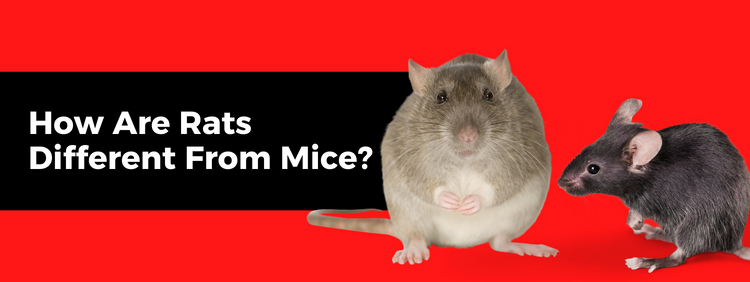Kitchener Pest Removal: How Are Rats Different From Mice?

The most notable difference between rats and mice is size. Mice are usually quite a bit smaller than rats, but it is common for property owners to confuse an adult mouse with a young rat.
Regardless of their differences, both species are destructive and reproduce rapidly. If you have a rodent problem, you will need to contact mouse or rat removal in Kitchener because the problem is not resolvable with DIY methods.
Attempting DIY is costly, potentially dangerous, and inhumane. Professional pest control services include exclusion, trapping, and treatment. Still, when calling a professional, it helps to know which species you are dealing with.
Differences Between Rats and Mice
While there are various species of rats and mice, the most prevalent pests in residential and commercial properties are the brown rat, black rat, and house mouse. The house mouse has several subspecies, but they are all essentially indistinguishable from each other.
All rodents look similar. At a quick glance, you will see a long tail, a set of incisors in the upper jaw, and short legs. Despite the similarities, rats and mice are distinguishable from one another, especially in four areas.
1. Size
Rats are larger than mice. Mice can reach an average length of 10 cm and rats up to 40 cm. Also, the smallest rat will be about 16 cm, but the smallest mouse will only be about 3 cm.
Because of their larger size, rats have a bit more heft to them as well, weighing anywhere between 150 and 300 g. Mice, with their small stature, will tip the scales between 12 and 45 g.
2. Diet
Mice and rats are omnivorous, meaning they eat almost anything, including meat and vegetables. Each species has its preferences, however. Black rats prefer fruit, whereas brown rats prefer cereal. Mice also like cereal. Rats need about 15 to 30 g of food daily, and mice only need about 3 g.
An interesting fact about mice is they do not need to drink water to survive, but it usually consumes about 3 ml when available. Rats do need water to survive. A black rat only needs around 30 ml daily, but a brown rat needs approximately 60 ml daily.
3. Property Damage
Both species can cause significant property damage. Rats and mice have teeth that grow continuously, requiring them to chew incessantly. The animals do not discriminate between chewing materials, meaning they will gnaw on wood, wires, boxes, etc. The primary concern is fire hazards because rodents often chew through live wires.
Also, rats and mice reproduce rapidly, having multiple litters throughout the year. Rats will have three to six litters per year, and each litter may have up to 10 pups. Mice reproduce seven to eight times per year, with each litter containing up to 16 pups. It is easy for either species to multiply into a colony of several hundred in only a few short months.
4. Appearance
When it comes to appearance, mice are small with large ears and long tails. Their legs and tails are covered with tiny hairs. Rats are large with small ears and long, thick tails. Their large feet and tails are hairless.
Importance of Hiring a Pest Control Service in Kitchener
Rats and mice are dangerous to have in and around the home. The rate of reproduction only increases the threat exponentially. A pest control service in Kitchener can help you resolve any rodent problems on or inside your property. If you believe you have a rat or mouse infestation, contact Truly Nolen Canada and request a visit.